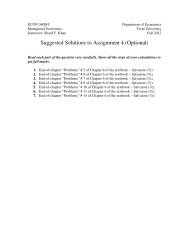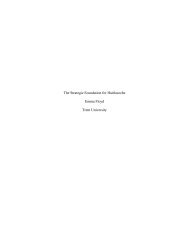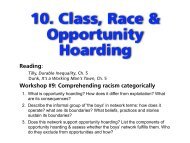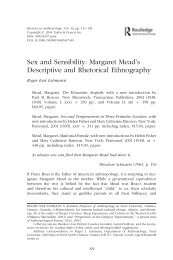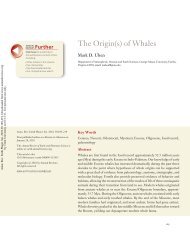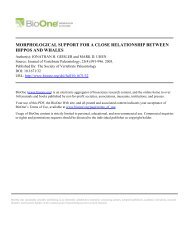REO FORTUNE'S PSYCHOLOGICAL THEORY OF CULTURAL ...
REO FORTUNE'S PSYCHOLOGICAL THEORY OF CULTURAL ...
REO FORTUNE'S PSYCHOLOGICAL THEORY OF CULTURAL ...
Create successful ePaper yourself
Turn your PDF publications into a flip-book with our unique Google optimized e-Paper software.
Fortune’s Theory of Cultural Ambivalence<br />
295<br />
stereotypes, but rather saw them as continually learning and changing, and<br />
holding multiple and contradictory views simultaneously.<br />
Conclusion<br />
Reo Franklin Fortune was a complex, changing personality whose early<br />
psychological theorizing lent subtlety to his subsequent ethnographic work.<br />
However, he did not treat his theory of dreaming as a set of hypotheses<br />
to be tested in the ethnographic field. Fortune’s theory of cultural ambivalence<br />
and his personality are consistent with his rejection of blanket<br />
characterizations of people and peoples.<br />
Fortune’s psychological theory of dreaming, though dated and imperfect,<br />
is a provocative and sophisticated anthropological theory of cultural<br />
ambivalence. Among its valuable implications is the point that the dynamic<br />
cycling of culture in individuals takes place in both waking and dreaming<br />
consciousness, as well as in the groggy zones in between. Fortune’s Mind<br />
in Sleep deserves a second chance among contemporary psychological<br />
anthropologists.<br />
ACKNOWLEDGMENTS<br />
I would like to thank Patricia A. Francis, who first told me of the existence of The Mind<br />
in Sleep. An earlier version of this article was presented in Lihu‘e, Hawai‘i at the 2005<br />
conference of the Association for Social Anthropology in Oceania as part of the symposium,<br />
“Gang of Four: Gregory Bateson, Ruth Benedict, Reo Fortune, and Margaret<br />
Mead in Multiple Contexts,” organized by Gerald Sullivan and Sharon W. Tiffany. I offer<br />
thanks to the coorganizers for helpful editorial comments and shepherding, including<br />
the push to track Fortune’s early ideas into his later ethnography. Thanks also to Caroline<br />
Thomas, who caught errors and filled in facts of Fortune’s life, and to Teresa DeCicco,<br />
for calling my attention to Jung’s notion of compensatory dreams.<br />
REFERENCES<br />
Banner, Lois W.<br />
2003 Intertwined lives: Margaret Mead, Ruth Benedict, and their circle. New York:<br />
Alfred A. Knopf.<br />
Benedict, Ruth<br />
1934 Patterns of culture. Reprint edition, 1953. New York: Mentor.<br />
Burridge, Kenelm<br />
1979 Someone, no one: An essay on individuality. Princeton: Princeton University<br />
Press.<br />
pacs-32-02-06.indd 295 9/7/2009 2:32:34 PM



